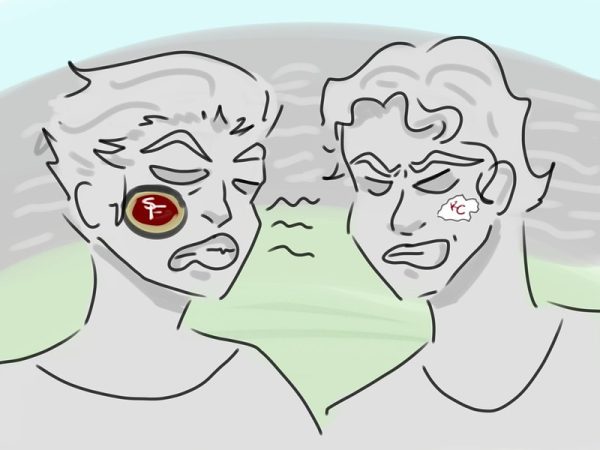The right to die: California governor legalizes assisted suicide
On Oct. 5, Governor of California Jerry Brown signed a bill that will allow California to become the fifth state to legalize assisted suicide as of January 2016.
In September of this year, the California legislature already gave their stamp of approval on the bill ABX2 15, otherwise known as the “End of Life Option Act”, that legalizes physician-assisted suicide in California. At the beginning of October, after a month of silence, Governor Jerry Brown decided to sign the bill into legislation. Following the states Oregon, Washington, Vermont and Montana, California will be the fifth state to legalize administered euthanasia in hospitals.
The law itself was framed around that of Oregon’s. For physician-assisted suicide to take place, a patient must be fully capable of physically taking the medication by themselves and have the mental capacity to make important medical decisions. Not to mention, a requirement of two doctors, both agreeing that that patient has less than six months to live, is necessary for said patient to be assisted by doctors to end their life. Generally, assisted suicide is a given option so that terminally-ill patients can decide, in lieu of potentially suffering in pain the last days of their life, to have the choice to choose to die a less painful death.
To avoid abuse of this bill, several safeguards are being added. In hopes of preventing any consequential incidents, patients are required to request the drugs at least three times, and at least once in writing before two witnesses. A form must also be signed two days before the patient ingests the medication to end their life. Many measures have been created to hopefully combat the opposition’s suspicions and concerns.
“We’ve crafted the strongest protections of any such law that currently exists,” said Bill Monning, a California senator and one of the law’s sponsors (New York Times).
Nevertheless, there’s still a lot of controversy surrounding this, as people believe legalizing assisted suicide is really exactly what is said in the name: assisted suicide. Many feel the ethical implications of having doctors assist patients in ending their lives makes the situation a moral gray area.
But Brown acknowledges, after he himself had to heavily consider what decision to make, that in the end, a patient should be given the option to at least decide themselves.
“I do not know what I would do if I were dying in prolonged and excruciating pain,” Brown said. “I am certain, however, that it would be a comfort to be able to consider the options afforded by this bill. And I wouldn’t deny that right to others” (New York Times).
Like Brown, many supporters of the recent bill believe that euthanasia allows terminally ill patients to decide to die of their own accord and hopefully die a more dignifying death.
However, although people rejoice in this, there are still others that can’t shake the feeling that the bill isn’t all it’s made out to be. A belief the opponents of assisted suicide share is that doctors swore the Hippocratic Oath, ensuring that they would do everything possible to keep their patients alive. But the fact that, now, a patient can direct their doctor to assist them in ending their life undermines the whole idea.
A large majority of the people in opposition to this bill are from religious groups, such as Roman Catholics and disability rights advocates, including the American Academy of Medical Ethics, the American Medical Association, the California Catholic Conference the Disability Rights Center etc. The advocates have a concern that it is possible, especially for terminally ill patients from lower income families, to be pressured by the people supporting them financially to take the drugs and avoid the later months of expensive life sustaining care. It even goes to the extent where some believe that relatives and caregivers could easily slip the patient drugs without their knowledge nor consent. These fears make people extremely wary of the potential consequences and abuses and still remain strongly opposed.
Despite disapproval and unswayed by opposition, 29-year-old Brittany Maynard, a woman from the Bay Area diagnosed with terminal brain cancer, decided to move to Oregon so that she could legally choose to die on her own terms. Before she passed away last November, she strongly advocated assisted suicide, and become a spokesperson for the “death with dignity” movement.
Before her death, Maynard stated very simply, “My question is: Who has the right to tell me that I don’t deserve this choice? That I deserve to suffer for weeks or months in tremendous amounts of physical and emotional pain? Why should anyone have the right to make that choice for me?” (CNN).
And although her family members mourned her death, they were thankful she was able to die without pain and suffering.
Regardless of criticism, after his time of silence and contemplation, spending time consulting people, such as two of his own doctors, a Catholic bishop, former classmates and friends with widely different opinions, Brown decided to sign the bill.
“In the end, I was left to reflect on what I would want in the face of my own death” (New York Times).
Starting January 2016, around 90 days after the bill was signed, hospitals will be readily administering euthanasia as doctors assist their patients in ending their lives. This piece of legislature will not be just another bill, but literally a matter of life and death.

Amanda joined the Tribune in her sophomore year as an aspiring journalist and avid storyteller. In her sophomore year, Amanda was a Student Life Editor and was promoted to Managing Editor with Armaan Rashid...











